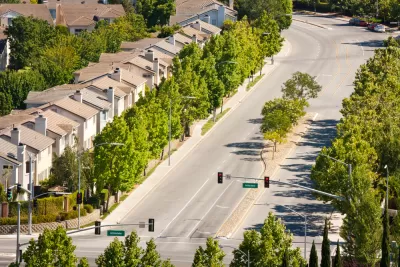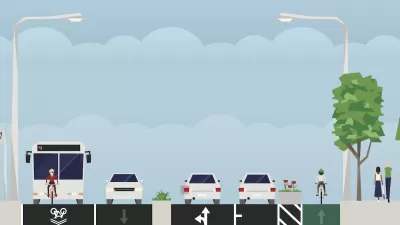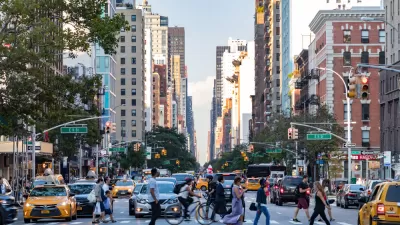One obstacle to laissez-faire capitalism is capitalists' ability to use government to favor one competitor over another; the history of American street design provides an example.

Libertarians dream of a laissez-faire capitalist nation, one with minimal government regulation and lots of entrepreneurs. There are many reasons why this goal is difficult to achieve; however, one reason is inherent in capitalism itself. As soon as a business gets large enough to have some spare cash, it might use that spare cash to obtain favors from government.
Of course, I am not the first person to discover this. For example, the plot of Ayn Rand’s Atlas Shrugged focuses less on the evils of the welfare state than on the efforts of a well-connected steel company (Orren Boyle’s Associated Steel) to use government to squash competition from Rearden Steel.
Peter Norton’s book Fighting Traffic shows how automobile-oriented street rules are at least partially a result of similar special interest manipulation. In the early 1920s, auto sales suffered because of urban traffic congestion and bad public relations related to the death toll from automobiles running over pedestrians. The auto industry and related groups such as road-builders and tire companies (or as Norton calls these groups, “motordom”) responded in three ways.
First, motordom hijacked the safety issue by blaming the victim. Car companies claimed that pedestrian deaths were the result of something called “jaywalking” (i.e., pedestrians using the streets as they had always used them, rather than waiting for automobile traffic to take its turn). In addition to financing a public relations campaign against jaywalking, motordom encouraged cities to enact anti-jaywalking ordinances.
Second, motordom lobbied government to reconstruct American streets in ways that favored fast car traffic, and even created its own "experts" to lobby city officials. A Los Angeles auto club hired Miller McClintock, a Harvard graduate student, as a consultant. Before being hired by the car lobby, McClintock wrote that widening streets would merely attract more traffic. After going on the motordom payroll, McClintock endorsed wider streets and fining jaywalkers. Car companies then hired McClintock to establish a foundation that taught engineers how to design cities for cars. The motordom-subsidized engineers then went to work in cities throughout the country, creating the sort of streets that infest cities today: wide streets where traffic flows at speeds fatal to pedestrians.
Of course, motordom needed a source of money to build these wider streets—so they urged government to enact gasoline taxes, and to devote gas tax money to widening streets and building new highways.
These motordom-favored streets shut out competing forms of transportation. Wider streets made walking unpleasant and dangerous, and thus discouraged not only walking, but also public transit (since most transit trips usually involve some walking).
New highways opened up new suburbs for development, thus shifting housing beyond the reach of existing streetcars, trains, and buses and forcing then-private transit providers to choose between two unpleasant options: losing revenue as its urban service area lost population, or spending money trying to extend service into suburbia. Today, motordom’s supporters claim that public transit is inefficient—but this inefficiency is largely the result of the motordom-endorsed policies discussed above.
In sum, the history of sprawl is actually a bit similar to the plot of Atlas Shrugged: just as Orren Boyle’s Associated Steel used government to smother Rearden Steel, the automobile lobby creatively used government to discourage walking and public transit.

Maui's Vacation Rental Debate Turns Ugly
Verbal attacks, misinformation campaigns and fistfights plague a high-stakes debate to convert thousands of vacation rentals into long-term housing.

Planetizen Federal Action Tracker
A weekly monitor of how Trump’s orders and actions are impacting planners and planning in America.

San Francisco Suspends Traffic Calming Amidst Record Deaths
Citing “a challenging fiscal landscape,” the city will cease the program on the heels of 42 traffic deaths, including 24 pedestrians.

Defunct Pittsburgh Power Plant to Become Residential Tower
A decommissioned steam heat plant will be redeveloped into almost 100 affordable housing units.

Trump Prompts Restructuring of Transportation Research Board in “Unprecedented Overreach”
The TRB has eliminated more than half of its committees including those focused on climate, equity, and cities.

Amtrak Rolls Out New Orleans to Alabama “Mardi Gras” Train
The new service will operate morning and evening departures between Mobile and New Orleans.
Urban Design for Planners 1: Software Tools
This six-course series explores essential urban design concepts using open source software and equips planners with the tools they need to participate fully in the urban design process.
Planning for Universal Design
Learn the tools for implementing Universal Design in planning regulations.
Heyer Gruel & Associates PA
JM Goldson LLC
Custer County Colorado
City of Camden Redevelopment Agency
City of Astoria
Transportation Research & Education Center (TREC) at Portland State University
Jefferson Parish Government
Camden Redevelopment Agency
City of Claremont






























